The Apple iPad 2 Review
by Brian Klug, Anand Lal Shimpi & Vivek Gowri on March 19, 2011 8:01 PM ESTI don't exactly remember when I stopped using the iPad, but it wasn't without me trying to use it. We reviewed the WiFi version on AnandTech last year but it was the AT&T 3G version that I ended up using most of the time. For short trips around NC I'd carry it with me. It was the perfect car companion. Smaller and lighter than a notebook but functional enough to get me through any short trip. I tried carrying it to lunch and meetings around town but for the most part it wasn't portable enough for that to make sense. A smartphone was a far better companion.
For several trips around the country I remember trying to take just the iPad, but I always needed to work on an article or publish something extensive while I was gone. For months I boarded every plane with the intention of bringing only the iPad but I always ended up bringing a notebook as well. Even when I went on vacation last year I had to finish a review and ended up bringing a notebook just for three days of use. Eventually I just gave up completely and left the iPad at home. As I mentioned in our review of the first iPad last year, this is a device that augments your existing setup - it replaces nothing. You'll still need a computer of some sort and you'll still need a phone, you just get to have another device that's more convenient than both of those occasionally.
These days my iPad sits docked at my desk doing nothing more than charging and receiving updates. Yet every time I'm at an airport I look around and see tons of passengers with their iPads. It's the new ThinkPad. I see it everywhere and people seem to be happy with it. In fact, last quarter 17% of Apple's total revenue came from iPad sales.
| AAPL Revenue Sources - Q1 2011 | |||||||||
| iPad | iPhone | iPod | Mac | iTunes Store | Software/Services | Peripherals | |||
| Percentage | 17.2% | 39.1% | 12.8% | 20.3% | 5.4% | 2.9% | 2.2% | ||
Clearly there are some users who love tablets and can use them on a regular basis, I'm just apparently not one of them. That's not to say that I don't like the iPad, in fact there are a number of things I still love about it. In our original iPad review I wrote about the more relaxed computing experience the iPad offers for those of us who work at a computer during the day. It's fun to just sit on a couch and surf the web on a tablet. It's easier to show your friends web pages and videos on the iPad than it is on a notebook. You can pass a tablet around like a pad of paper while a notebook is far more clunky. The overall experience is just so much more intimate. In using the iPad, Xoom and iPad 2 for this review I even found myself missing parts of the experience that I'd forgotten about. Overall my stance hadn't changed. While I enjoy using a tablet and find it to be a more relaxed way of computing, it's the lack of performance, still not quite perfect ergonomics, the clunky multitasking UI and the lack of a convenient physical input devices that keep the iPad from being a part of my daily life. Don't get me wrong, I do believe there's clearly a future for tablets - the present day sales alone are proof of that. It's just that I believe tablets are on an evolutionary course towards perfection.
I'm currently typing this paragraph on an iPad 2 connected via HDMI to a Dell 24" display. If I wanted to I could even push the iPad to the side and use a bluetooth keyboard. This thing could easily replace a mainstream PC, it's just missing a few features.
There's no support for Flash. Like it or not Flash support is still an important part of the overall PC experience. Eventually Apple will either cave, become irrelevant or HTML5 will replace Flash entirely on the web. One way or another, this problem gets solved.
Multitasking is a pain. When the iPad first debuted there was no hope for multitasking, but now with the feature it's still far from magical. I need to tap the home button twice to bring up a task switcher, then tap or swipe/type before getting to the application I'm trying to switch to. There's no alt+tab (or cmd+tab) and no immediately visible task/dock bar of my currently running apps. Copying data between apps is a pain as I can't physically look at two things at once, there's just constant switching required to get things done. When I get a new email on the iPad I have to stop what I'm doing, go read the email and then switch back to what I was doing. The same goes for if I need to respond to an IM quickly while writing in Pages. With apps only running full screen and no support for windows, using a tablet can often times seriously reduce productivity. These are solvable problems. Apple and Microsoft figured out how to do it on the desktop after all, but we're just not there yet with tablets.
Alongside multitasking is the performance problem. With the original iPad even deleting several emails at a time was a bit choppy, and web page rendering performance needed tons of work. As always Apple does its best to hide the limitations of the platform but I must point out that even the iPad 2 with a pair of ARM Cortex A9s has lower CPU performance than a netbook with a single core Atom. The fact that you can't really tell most of the time is a testament to Apple's software engineering, but it doesn't change reality.
Ergonomics aren't perfect either. Brian Klug actually helped me realize this next point but the iPad and other tablets aren't great on-the-go devices. Tablets work very well when you're stationary but if you're up and about, moving around, a smartphone is a much better fit. Even when you're stationary there are issues. You have to be in the right physical position to comfortably use a tablet. Simply plopping it down on your lap like you would a notebook won't always work.
There's also the idea of synergy among devices. Even if you play within the Apple universe and own a Mac, an iPhone and an iPad, there's no magical way of sharing data and applications between them. I should be able to work on my Mac, step away and have my apps/data come with me. Your best bet is something like Dropbox but that's no where near the type of cohesive solution I'm talking about. Think HP's webOS touch-to-share but on steroids and you're on the right track.
The list goes on and on. If you've ever spent sufficient time with a tablet you'll quickly be able to add to this list. The tablet is still in its infancy as a computing device and as successful as the iPad may be, it still has a long road ahead before it's anywhere near perfect. Just the items I've mentioned above are too much to address with a single product update, but remember that revolution comes about via constant evolution.
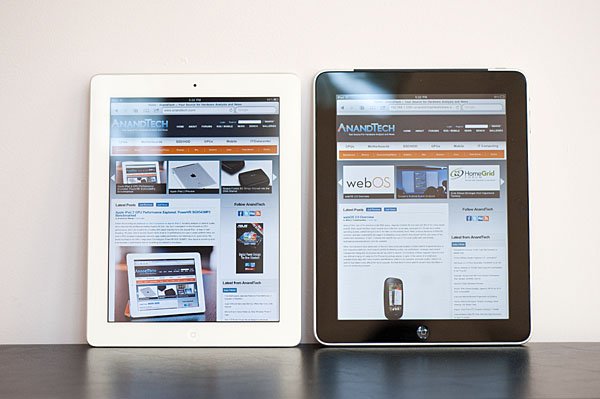
Apple iPad 2 (left), Apple iPad (right)
Meet the iPad 2.


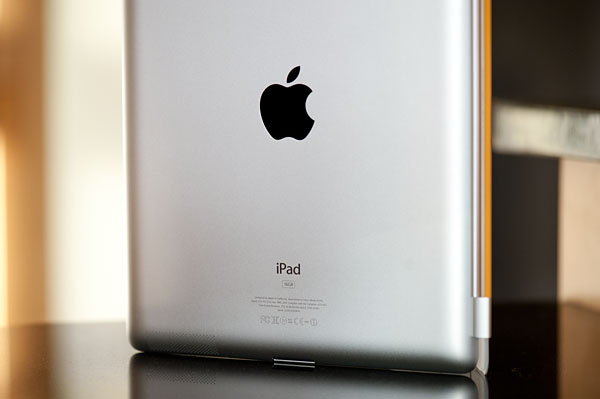
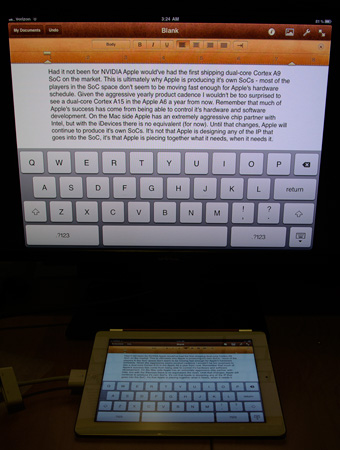
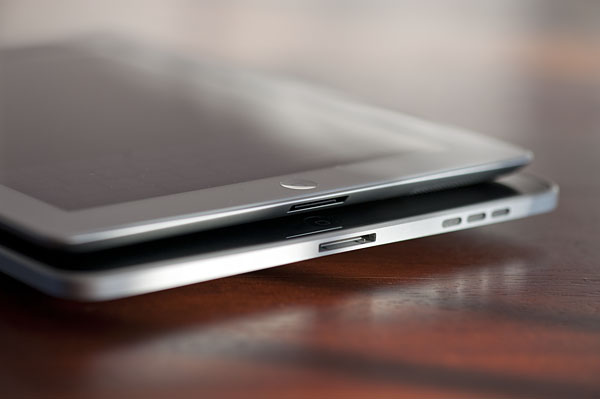
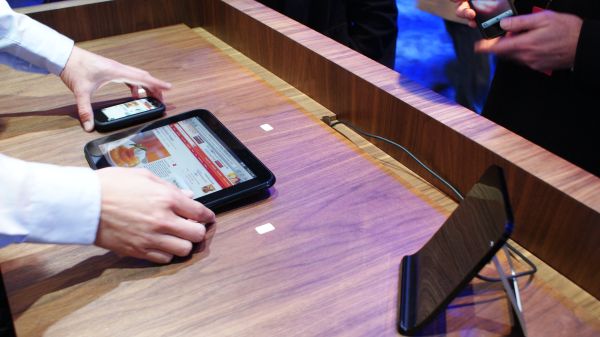








189 Comments
View All Comments
JarredWalton - Sunday, March 20, 2011 - link
Considering the source (ARMflix), you need to take that video with a huge grain of salt. It looks like they're running some Linux variant on the two systems (maybe Chromium?), and while the build may be the same, that doesn't mean it's optimized equally well for Atom vs. A9.Single-core Atom at 1.6GHz vs. dual-core A9 at 500MHz surfing the web is fine and all, but when we discuss Atom being faster than A9 we're talking about raw performance potential. A properly optimized web browser and OS experience with high-speed Internet should be good on just about any modern platform. Throw in some video playback as well, give us something more than a script of web pages in a browser, etc.
Now, none of this means ARM's A9 is bad, but to show that it's as fast as Atom when browsing some web pages is potentially meaningless. What we really need to know is what one platform can do well that the other can't handle properly. Where does A9 fall flat? Where does Atom stumble?
For me, right now, Atom sucks at anything video related. Sorry, but YouTube and Hulu are pretty important tools for me. That also means iOS has some concerns, as it doesn't support Flash at all, and there are enough places where Flash is still used that it creates issues. Luckily, I have plenty of other devices for accessing the web. In the end, I mostly play Angry Birds on my iPod Touch while I'm waiting for someone. :-)
Wilco1 - Sunday, March 20, 2011 - link
The article is indeed wrong to suggest that the A9 has only half the performance of an Atom. There are cases where a netbook with a single core Atom might be faster, for example if it runs at a much higher frequency, uses hyperthreading, and has a fast DDR3 memory system. However in terms of raw CPU performance the out-of-order A9 is significantly faster than the in-order Atom. Benchmark results such as CoreMark confirm this, a single core Atom cannot beat an A9 at the same frequency - even with hyperthreading. So it would be good to clarify that netbooks are faster because they use higher frequency CPUs and a faster memory system - as well as a larger battery...somata - Sunday, March 27, 2011 - link
CoreMark is nearly as meaningless as MIPS. Right now the best cross-platform benchmark we have is Geekbench. It uses portable, multi-threaded, native code to perform real tasks. My experience with Geekbench on the Mac/PC over the years indicates that Geekbench scores correlate pretty well to average application performance (determined by my personal suite of app benchmarks). Of course there will be outliers, but Geekbench does a pretty good job at representing typical code.Given that, the fact that a single-core 1.6GHz Atom (with HT) scores about 28% higher than the IPad's dual-core 1GHz A9s in the integer suite leaves me little doubt that the Atom, despite being in-order, has as good or better per-clock performance than the A9s.
Even the oft-maligned PowerPC G4 totally outclasses the dual A9s, with 43% better integer performance at 1.42GHz... and that's just with a single core competing against two!
tcool93 - Sunday, March 20, 2011 - link
Tablets do have their advantages despite what the article claims. For one thing, their battery life far out lives any Netbook or Notebook. They also run a lot cooler, unlike Notebooks and Netbooks, which you can fry an egg on. Maybe they aren't as portable as a phone, but who wants to look at the super tiny print on a phone.Tablets don't replace computers, and never will. There are nice to sit in bed with at night and browse the web or read books on, or play a simple game on. Anything that doesn't require a lot of typing.
Even a 10" tablet screen isn't real big to read text, but its MUCH easier to zoom in on text to read it with tablets. Unlike any Notebook/'Netbook, which its a huge pain to get to zoom in.
tcool93 - Sunday, March 20, 2011 - link
I do think the benchmarks shown here do show that there is quite an improvement over the Ipad 1, despite what many seem to claim that there isn't much of an upgrade.secretmanofagent - Sunday, March 20, 2011 - link
Anand,Appreciate the article, and appreciating that you're responding to the readers as well. All three of you said that it didn't integrate into your workflow, and I have a similar problem (which has prevented me from purchasing one). One thing I'm very curious about: What is your opinion on what would have been the Courier concept? Do you feel that is the direction that tablets should have taken, or do you think that Apple's refining as opposed to paradigming is the way to go?
VivekGowri - Sunday, March 20, 2011 - link
I still despise Microsoft for killing the Courier project. Honestly, I'd have loved to see the tablet market go that direction - a lot more focused on content creation instead of a very consumption-centric device like the iPad. A $4-500 device running that UI, an ARM processor, and OneNote syncing ability would have sold like hotcakes to students. If only...tipoo - Sunday, March 20, 2011 - link
Me too, the Courier looked amazing. They cancel that, yet go ahead with something like the Kin? Hard to imagine where their heads are at.Anand Lal Shimpi - Monday, March 21, 2011 - link
While I've seen the Courier video, and it definitely looked impressive, it's tough to say how that would've worked in practice.I feel like there are performance limitations that are at work here. Even though a pair of A9s are quick, they are by no means fast enough. I feel like as a result, evolutionary refinement is the only way to go about getting to where we need to be. Along the way Apple (and its competitors) can pick up early adopters to help fund the progress.
I'm really curious to see which company gets the gaming side of it down. Clearly that's a huge market.
Take care,
Anand
Azethoth - Monday, March 21, 2011 - link
Gaming side is a good question. Apple will have an advantage there due to limited hardware specs to code to. They are a lot more like a traditional console that way vs Android which will be anything but.Are actual game controls like in the psp phone necessary?
I am also curious what additional UI tech will eventually make it to the pad space:
* Speech, although it is forever not there yet.
* 3D maybe if its not a fad (glasses free)
* Some form of the Kinect maybe to manipulate the 3d stuff and do magical kinect gestures and incantations we haven't dreamed up yet.
* Haptic as mentioned earlier in the thread.
Speech could make a pad suitable for hip bloggers like the AnandTech posse.